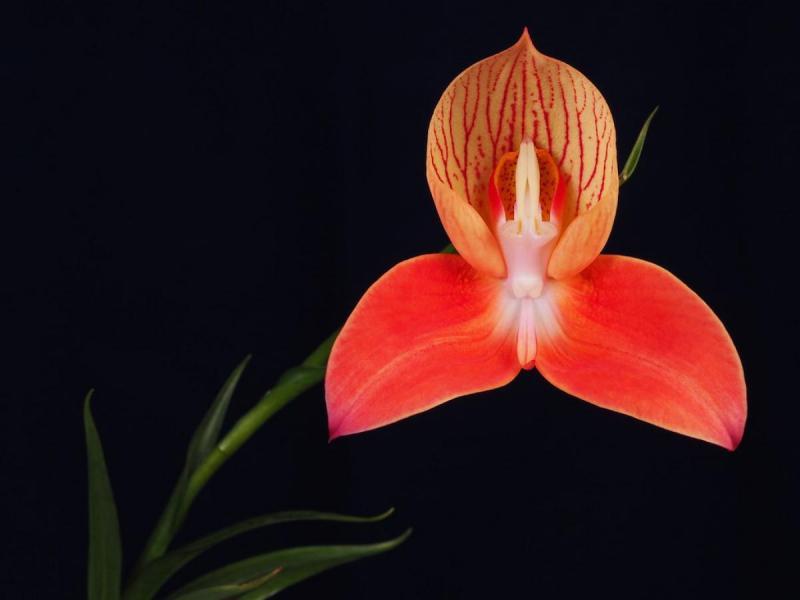Disa uniflora
Also known as: The Single Flowered Disa or Disa uniflora h.v. superba Disa grandiflora h.v. superba Satyrium grandiflorum Disa barellii Disa grandiflora in the subfamily: Orchidoideae
Native to: South Africa
General Information
The Single Flowered Disa is a small to large cool to warm growing terrestrial orchid belonging to the sub family Orchidoideae native to South Africa.
Plant Description
Grows to 15-60cm. Each new growth has numerous lance shaped leaves that grow to 15-25cm long. Pseudobulbs grow to 60cm
Flowers
Numerous short lasting, fragrant blossoms appear during Spring
Fragrance
The orchid is fragrant.
Blooming Season
- Spring
Substrate(s)
- Treefern
- Spaghnum Moss
- Perlite
- Sand
Care Notes
These orchids live on the forest floor and keep tubers to store energy and nutrients during dormancy and poor weather. They are generally quite forgiving and usually thrive on neglect, as long as it's the type of neglect where they are forgotten to be watered or fertilised, as overwatering can cause rot, and excessive fertilisers can affect the fine root system.
They are quite forgiving when it comes to light and environmental conditions, as long as they have enough moisture in the soil to keep going. Damage to leaves from overexposure to light or dry conditions has no long term implications as the plant will withdraw back to the tuber and be replaced with a new plant in the next season. Just be sure not to overwater damaged plants as they will rot.
They will enter a dormancy phase where leaves are shedded the plant withdraws back to the ground. During dormancy tubers can be removed from the soil, kept in a dry cool place if required, replanting when new roots appear. However, most plants will do better if not disturbed, and replanting late can set back the plant and reduce the likelihood of flowering in the following year.
In many areas these can be grown in the garden, needing little maintenance.
Fragrant:- IsFragrant
Climate
These orchids thrive in hot, steamy locations, living in low altitude jungle areas where they often receive heavy sporadic rainfall, warm humid winds, and sunlight filtered year round by the surrounding growth.
They can survive, but will often struggle if the humid, warm conditions are not met - roots will die back and leaves will thin out, spikes and buds can be aborted if conditions change too frequently during flowering. They can tolerate cooler or drier conditions temporarily, but extended exposure will seriously affect them.
They will grow best in the tropics, especially coastal areas where they receive ocean breezes, but can do well in a greenhouse, supplied that the humidity is kept high, temperature is not allowed to skyrocket and extra shade is provided during hot weather.
Grows at low to high elevations. Rainfall ranges from 15mm to 109mm per day, heaviest in December and lightest in August. Humidity ranges from 63% to 79%, highest in January and lowest in June. Temperature ranges from 7C to 26C, highest in August (15C to 26C) and lowest in January (7C to 17C).
Watering
These orchids prefer a wet-dry cycle between waterings, they should be watered frequently but only when the moisture is approaching dryness, where the pot feels light and/or the media looks dry. Keep an eye on mounted orchids in warm weather as they may dehydrate quickly.
Fertiliser
These plants do well with slow release fertiliser at the rate of 2-3 pellets per cup (250ml) of media. Additional fertiliser during the growth period may be beneficial, but not necessary.
Potting
These plants can be sensitive to repotting though should not require repotting regularly. Repotting should be done when the mix has broken down to the point that it doesn't absorb water or holds onto water for far too long, usually the plant shows a decline in growth as well. Repotting is best done after the growing season when the plant has died back.
The mix should be free draining, with a blend of 30% inorganic ingredients such as coarse sand, gravel or perlite, mixed in with about 70% organic ingredients such as peat, leaf litter or decomposed bark. Avoid commercial potting mixes as they can vary wildly and may contain "wetting agents" that can hold onto water for loo long, causing rotting and stunted growth.
Repotting is best done annually.





















